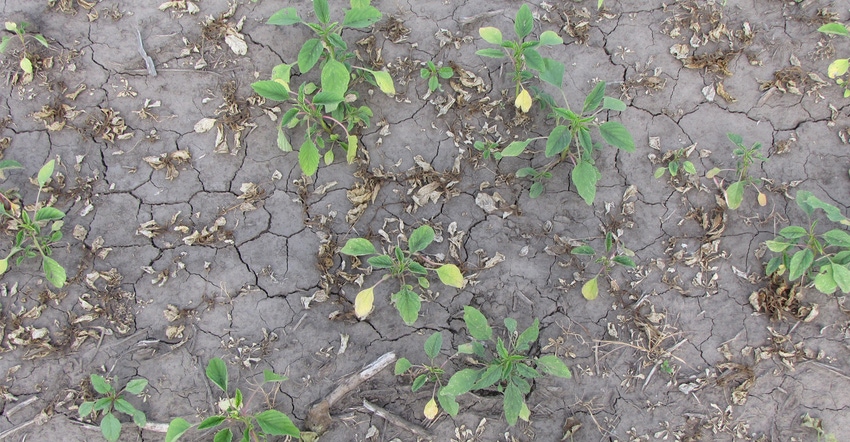
The conventional wisdom in growing sorghum has been to start clean and stay clean, with preemergence herbicides before planting.
However, many farmers in Kansas didn’t have favorable weather conditions to apply their preemergence herbicides before they needed to get their sorghum in the ground. Sarah Lancaster, Kansas State University Extension weed science specialist, says they have options for control, but they need to act swiftly before that palmer grows too tall.
Herbicide options
Lancaster wrote about these options in the July 7 K-State Agronomy eUpdate. She said postemergence herbicide options for grain sorghum are limited, and all are most effective when the palmer amaranth is under 4 inches tall.
Some options include:
Atrazine. This herbicide can control sensitive populations of Palmer amaranth, and can be combined with other herbicides to enhance effectiveness, she writes. It can be applied to grain sorghum between three-leaf and 12 inches tall, or between 6 and 12 inches in western Kansas. Be sure to apply with crop oil or surfactant to target emerged weeds, and observe rate limits for your area.
Aim (carfentrazone). This Group 14 herbicide can be applied to grain sorghum between 4 inches and boot stage. It is less effective than some other herbicides, but it can be tank-mixed with atrazine, 2,4-D, dicamba, bromoxynil and Huskie. Lancaster warns Aim is likely to burn grain sorghum leaves, especially if applied in very hot, humid weather or if applied with crop oil or bromoxynil.
2,4-D. This will be effective to control Palmer amaranth, but you should expect sorghum to respond with rolled leaves, lodging and brittle stems, Lancaster warns. Grain sorghum is most tolerant when it is 5 to 10 inches tall. Use drop nozzles; and to further avoid crop response, apply lower rates with atrazine, Aim, bromoxynil or Huskie. Crop oil in your tank mix with 2,4-D will increase crop injury.
Dicamba. The rates used in grain sorghum may be less effective on Palmer amaranth than 2,4-D. However, it can be applied to grain sorghum that is up to 15 inches tall. Be sure to use drop nozzles if your grain sorghum is 8 inches or taller, to avoid damaging your seed heads. Applying in hot, humid conditions can result in a crop response such as rolled leaves and lodging. Dicamba can be tank-mixed with Aim, atrazine and bromoxynil.
Bromoxynil. It can be applied from the three-leaf stage through the boot stage, and crop response will be less than with other herbicides. However, Lancaster warns, bromoxynil alone will not control Palmer amaranth larger than four-leaf, so be sure to get adequate spray coverage for maximum effectiveness.
Huskie (pyrasulfutole+bromoxynil). This is most effective when mixed with atrazine. By itself, it can be applied between three-leaf and 30 inches, and should be applied with high-surfactant-oil concentrate or AMS + NIS. Huskie will burn leaves, and that can be even greater in fields where mesotrione was applied preemergence.
If you have questions about your specific field, be sure to contact your local Extension office or email Lancaster at [email protected]. More information can also be found in the 2022 Chemical Weed Control for Field Crops, Pastures, Rangeland, and Noncropland guide online at bit.ly/chemweedcontrol.
K-State Research and Extension contributed to this article.
About the Author(s)
You May Also Like






